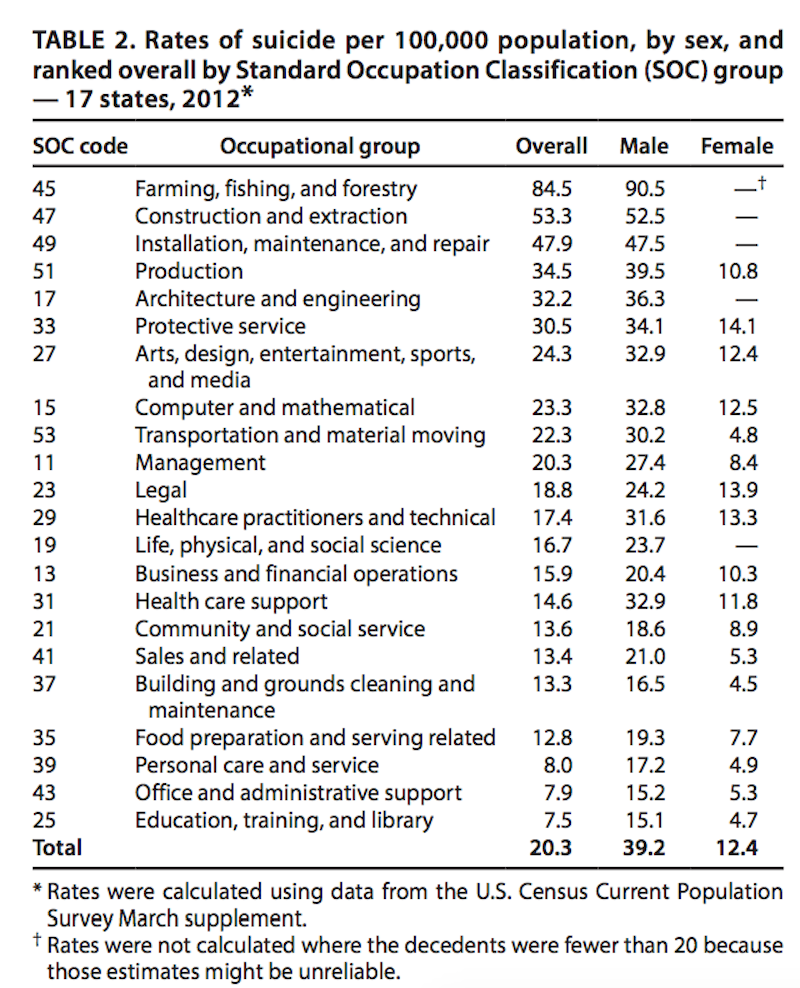These are the jobs with the highest rates of suicide
Suicide is one of the top 10 leading causes of death in the US.
Pinpointing the cause of suicide is almost impossible as there are a number of potential factors. This makes working on prevention efforts key. So the CDC analyzed the jobs that have the highest rates of suicide per 100,000 people in an attempt to figure out where to focus prevention efforts.
The report published Thursday looked at data from 17 states in 2012, compiled in the CDC's National Violent Death Reporting System from an occupational perspective. The 17 states were: Alaska, Colorado, Georgia, Kentucky, Maryland, Massachusetts, New Jersey, New Mexico, North Carolina, Ohio, Oklahoma, Oregon, Rhode Island, South Carolina, Utah, Virginia, and Wisconsin.
Overall, the report found that the occupation group with people working in farming, fishing, and forestry had the highest rate of suicide at 84.5 per 100,000 people. Those working in education, training, and at the library had the lowest rate, at 7.5 per 100,000.
Here's how the occupations compared from highest to lowest rate per 100,000:

CDC.gov
The researchers did note that they were limited because about 5% of suicide cases couldn't be assigned an occupation. And the 17 states where data was collected aren't necessarily indicative of the entire nation.
The report pointed out prevention practices, such as employee-assistance programs, workplace-wellness programs that educate on suicide warning signs, and employee education about the National Suicide Prevention Lifeline.
See Also:

 Yahoo Finance
Yahoo Finance 
